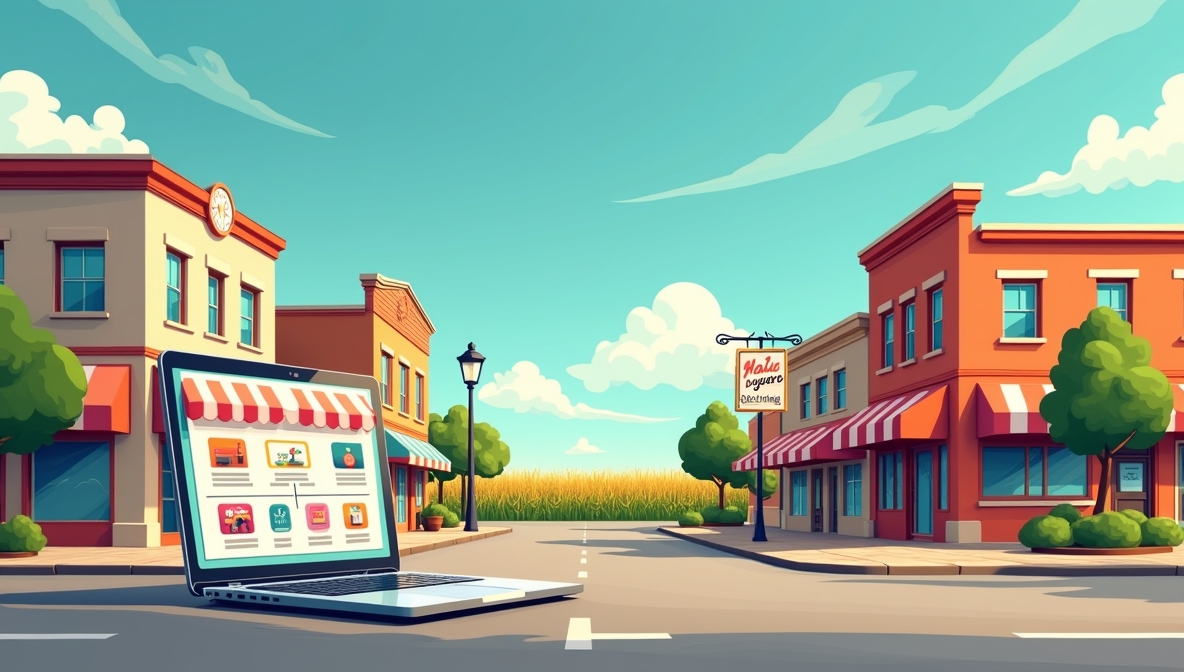E-commerce has reshaped how people shop, and the effects on physical stores in Iowa’s Creative Corridor are unmistakable. From fluctuating foot traffic to shifts in consumer expectations, the ripple effect continues to shape retail strategies.
Shifting Consumer Behavior
People want convenience. They expect speed, easy price comparisons, and product availability 24/7. Local retailers now compete not only with each other but with global giants that ship products overnight. A customer who once visited a local boutique might now scroll through ten online alternatives without leaving the couch.
Sales Channels Reimagined
Retailers once relied solely on physical foot traffic. Now they need to consider:
- Mobile shopping apps
- Online marketplaces
- Social media storefronts
- Local delivery and curbside pickup options
Those who fail to integrate some form of digital presence risk losing visibility.
Advantages of E-Commerce That Challenge Local Shops
1. Broader Reach:
An online store can reach customers across the country, while local stores remain bound by geography.
2. Lower Overhead Costs:
Online retailers can skip rent, utilities, and in-store staffing.
3. Real-Time Data:
Digital platforms allow retailers to track user behavior, test pricing strategies, and automate marketing.
4. Algorithmic Targeting:
E-commerce businesses use data to appear in front of the right audience at the right time.
Local Shops Fight Back
Despite challenges, many brick-and-mortar businesses in the Creative Corridor aren’t fading. They’re adjusting.
In-store experiences:
Shops are offering in-person events, product demos, and community meetups.
Buy online, pick up in-store:
A hybrid option that satisfies both convenience and immediacy.
Hyperlocal marketing:
Focusing on nearby customers using SMS campaigns, neighborhood ads, and real-time promotions.
Product curation:
Instead of trying to offer everything, local stores focus on what they know their community needs.
Not Just About Sales
Many shoppers still value human interaction, the feel of a product before buying, and the personalized advice of an in-store expert. For some, it’s about trust. For others, it’s about supporting local families.
Stores that make customers feel heard, seen, and appreciated stand out—even without massive budgets.
Impact on Employment and Real Estate
E-commerce contributes to fewer in-store retail jobs but more warehousing and logistics roles. Commercial landlords have had to rethink retail spaces, favoring pop-ups, co-retail arrangements, or experience-driven setups.
E-Commerce Can Help Local Retailers Too
Some of the most successful shops blend physical and digital. They sell in-store, online, and even at markets or events. Their websites act as catalogs, order forms, appointment books, and storytelling platforms.
Examples include:
- A Cedar Rapids bakery offering online ordering and weekend pickup.
- An Iowa City bookstore hosting virtual author talks and selling signed copies online.
- A Marion clothing boutique posting daily Instagram drops with direct checkout links.
Final Thought
E-commerce hasn’t eliminated local retail—it has forced it to adapt. The future isn’t about choosing one over the other. It’s about using the strengths of both. Stores that understand this shift are not only surviving but building deeper roots in their communities.
